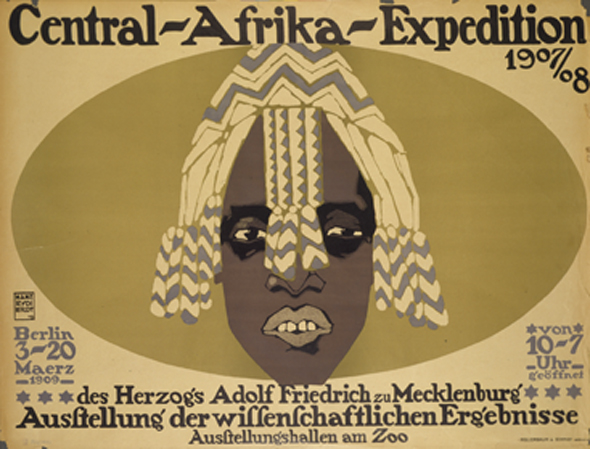Source

Source: Poster, 1909. Deutsches Historisches Museum, Berlin
The acquisition of colonies in Africa stimulated the popular
imagination in Germany. Once-foreign lands and peoples were now under
German control, to be “discovered,” analyzed, and catalogued. In the
nineteenth century Germans were leaders in the new field of
anthropology. Anthropological exhibitions allowed the larger public to
encounter African peoples and cultures. This poster suggests the
exoticizing and simultaneously demeaning character of one such
exhibition, which was put on in 1909. Duke Adolf Friedrich of
Mecklenburg, who is named as the organizer, had led an expedition that
crossed the African continent from east to west in 1907-1908. The
expedition was intended for topographical, botanical, medical, and
ethnographic research and was documented photographically. In addition
to various objects that were presumably on display in this exhibition,
he also brought more than 1,000 skulls to Germany that had been stolen
from graves.
The text reads: “Central Africa Expedition taken in
1907/1908 by Duke Adolf Friedrich of Mecklenburg. Exhibition of
Scientific Findings. Exhibition Halls at the Zoo. Berlin, March 3-20,
1909. Open from 10am-7pm.”

Source: Poster, 1909. Deutsches Historisches Museum, Berlin
Adolf Friedrich Herzog zu Mecklenburg: Ins innerste Afrika: Bericht über den Verlauf der wissenschaftlichen Zentral-Afrika-Expedition 1907/08. Leipzig, 1909 .